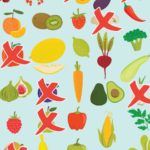Recipes Ne Demek: An Ultimate Guide to Turkish Cooking
“Recipes ne demek?” translates from Turkish to “What does recipe mean?” But for those venturing into the vibrant world of Turkish cuisine, the question becomes far more nuanced. It’s not just about understanding the ingredients; it’s about grasping the heart and soul of a culture expressed through its food. This guide delves into the essential elements of Turkish cooking, offering a deeper understanding beyond simple translations of recipes.
Understanding Turkish Culinary Influences:
Turkish cuisine is a rich tapestry woven from threads of diverse cultures and geographical influences. Its history spans centuries, shaped by the interactions of nomadic Turkic tribes, the Byzantine Empire, the Ottoman Empire, and neighboring regions like the Middle East, the Balkans, and Central Asia. This confluence is evident in the incredible variety of flavors, techniques, and ingredients found in Turkish cooking.
Key Ingredients: The Building Blocks of Turkish Flavors:
Mastering Turkish cooking begins with understanding its core ingredients. These aren’t just components; they are the foundation upon which countless dishes are built.
- Lamb: A staple meat, often used in stews, kebabs, and roasted dishes. Its rich, savory flavor is integral to many traditional recipes.
- Beef: While less prevalent than lamb, beef features in kebabs, slow-cooked stews, and hearty winter meals.
- Chicken: A versatile protein, used in kebabs, soups, and more delicate dishes.
- Vegetables: A cornerstone of Turkish cuisine. Eggplant, tomatoes, peppers, onions, zucchini, and various greens are used extensively, often roasted, stuffed, or incorporated into stews.
- Legumes: Lentils, chickpeas, and beans form the base of many flavorful and hearty soups and stews. They add both protein and texture.
- Grains: Rice, bulgur (cracked wheat), and bread are essential components. Bulgur, in particular, is a staple in many dishes, providing a unique nutty flavor and texture.
- Herbs and Spices: The aromatic heart of Turkish cuisine. Sumac, paprika, cumin, turmeric, mint, parsley, dill, and oregano are just a few of the spices that lend their unique character to Turkish dishes.
- Nuts and Seeds: Pistachios, walnuts, almonds, and sesame seeds add richness and texture to both sweet and savory dishes.
- Dairy: Yogurt, particularly, plays a vital role, acting as a base for sauces, a component in stews, and a refreshing accompaniment to many meals. Cheese, in various forms, also features prominently.
- Olive Oil: A healthy and flavorful fat, essential for many dishes, from salads to roasting vegetables.
Cooking Techniques: More Than Just Following a Recipe:
Understanding the techniques is as crucial as knowing the ingredients. Turkish cooking employs a range of methods:
- Slow Cooking: Many traditional dishes rely on slow cooking to develop rich, deep flavors. This technique is particularly common in stews and braises.
- Roasting: Vegetables and meats are often roasted to perfection, enhancing their natural sweetness and creating delicious caramelization.
- Grilling/Kebab Preparation: Kebabs are a cornerstone of Turkish cuisine, requiring skill in marinating and grilling the meat to achieve the perfect balance of flavors and textures.
- Stuffing: Vegetables like peppers, zucchini, and grape leaves are frequently stuffed with flavorful rice, meat, and herb mixtures.
- Layering: Dishes like baklava demonstrate the art of layering ingredients to create complex textures and flavors.
Regional Variations: A Culinary Journey Across Turkey:
Turkish cuisine isn’t monolithic; it varies significantly across different regions. Each area boasts its unique specialties, reflecting local ingredients and culinary traditions.
- Istanbul: Known for its diverse culinary scene, reflecting its position as a historical crossroads. Seafood, pastries, and a variety of street food are prominent.
- Anatolia (Central Turkey): This region features hearty stews, lamb dishes, and regional variations of kebabs.
- Aegean Coast: Influenced by Greek cuisine, this area features lighter dishes with abundant use of olive oil, herbs, and seafood.
- Black Sea Region: Known for its corn-based dishes, rich in butter and cheese, reflecting the region’s unique climate and agricultural produce.
- Southeastern Turkey: This region boasts a spicy cuisine, influenced by its proximity to the Middle East, featuring dishes rich in herbs and spices.
Popular Turkish Dishes: A Culinary Exploration:
Exploring Turkish cuisine means discovering an array of delicious dishes. Here are a few examples:
- Kebab: A broad category encompassing various grilled meat dishes, marinated and cooked over charcoal. Examples include şiş kebabı (grilled meat skewers), döner kebabı (rotating grilled meat), and adana kebabı (spicy minced meat kebab).
- Pilav: Turkish rice dishes, often flavored with herbs, spices, and sometimes meat or vegetables.
- Dolma: Stuffed vegetables, such as vine leaves (yaprak dolma), peppers (biber dolma), or zucchini (kabak dolma), filled with rice, herbs, and often meat.
- Çorba: A wide variety of soups, ranging from lentil soup (mercimek çorbası) to tomato soup (domates çorbası).
- Baklava: A rich, sweet pastry made with layers of filo pastry, filled with nuts and drenched in syrup.
- Turkish Delight (Lokum): A traditional confection made with starch, sugar, and flavorings, often rosewater or lemon.
Beyond the Recipe: The Cultural Context of Turkish Food:
Turkish cooking is more than just a collection of recipes; it’s a reflection of the country’s history, culture, and social fabric. Sharing a meal is a significant social event, emphasizing community and hospitality. Understanding this context enriches the culinary experience and allows for a deeper appreciation of the food. It’s about the stories behind the dishes, the traditions passed down through generations, and the communal aspect of food preparation and sharing. To truly understand “recipes ne demek” in the context of Turkish cuisine is to understand the cultural tapestry interwoven into every bite.





